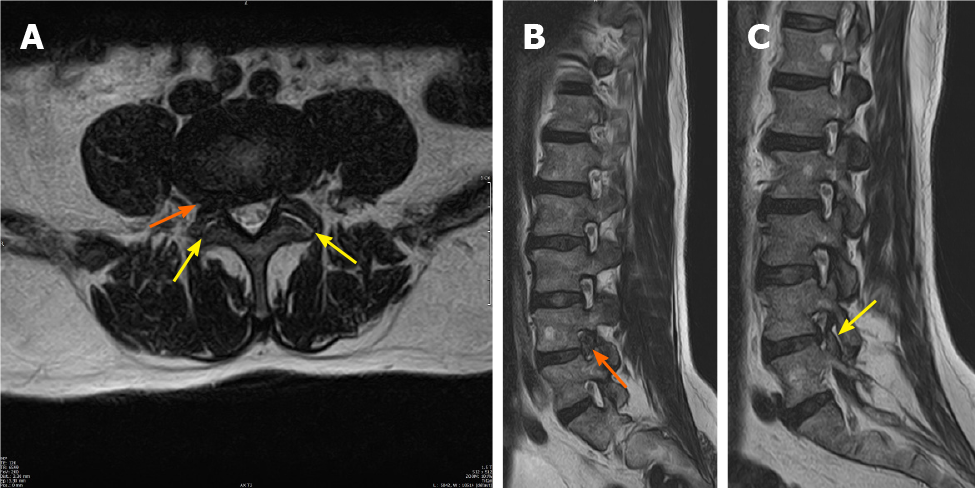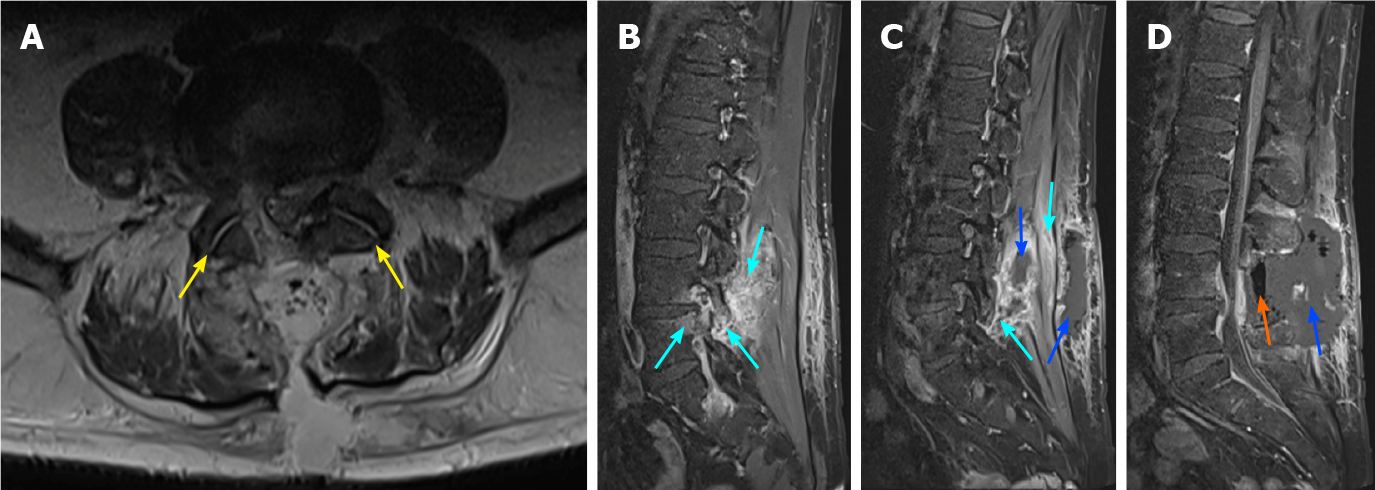Copyright
©The Author(s) 2021.
World J Clin Cases. May 26, 2021; 9(15): 3637-3643
Published online May 26, 2021. doi: 10.12998/wjcc.v9.i15.3637
Published online May 26, 2021. doi: 10.12998/wjcc.v9.i15.3637
Figure 1 Magnetic resonance imaging scan done 2 d before the last infiltration, 1.
5 mo preoperatively. A: T2-weighted axial magnetic resonance imaging (MRI) image; B: T2-weighted right-sided sagittal MRI image showing right-sided foraminal lumbar disc herniation at L4-L5 (orange arrows), with compression of the right-sided exiting L4-nerve root; C: T2-weighted left-sided sagittal MRI image showing a slight bulging of the L4-L5 disc, without compression of the exiting nerve root. In (A) and (C) fluid collections can be seen in both facet joints (yellow arrows), without visible signs of edema.
Figure 2 Magnetic resonance imaging scan on day 4 postoperatively.
A: T2-weighted axial magnetic resonance imaging (MRI) image showing a central decompression on L4-L5, with removal of the right-sided foraminal herniation. A fluid collection can be seen in both L4-L5 facet joints (yellow arrows); B and C: Right-sided and left-sided T2-weighted sagittal MRI images showing removal of the right-sided foraminal disc herniation; D: T2-weighted central sagittal MRI image showing a fluid collection (blue arrow), with small air collections (orange arrow) and a drain (purple arrow).
Figure 3 Magnetic resonance imaging scan on day 6 postoperatively.
A: Axial T1-TSE-FS-weighted magnetic resonance imaging (MRI) image at the level of L4-L5 showing a fluid collection in both facet joints; B and C: Right-sided and left-sided T1-TSE-weighted sagittal MRI image showing an increase in fluid collections, especially left-sided (blue arrows), and an increase in edema in the bone, facet joint and muscles surrounding the facet joints (light blue arrows); D: T1-TSE-weighted central sagittal MRI image showing an increase in fluid collection (blue arrow), with an increase in air collections (orange arrow).
- Citation: Kerckhove MFV, Fiere V, Vieira TD, Bahroun S, Szadkowski M, d'Astorg H. Postoperative pain due to an occult spinal infection: A case report. World J Clin Cases 2021; 9(15): 3637-3643
- URL: https://www.wjgnet.com/2307-8960/full/v9/i15/3637.htm
- DOI: https://dx.doi.org/10.12998/wjcc.v9.i15.3637











